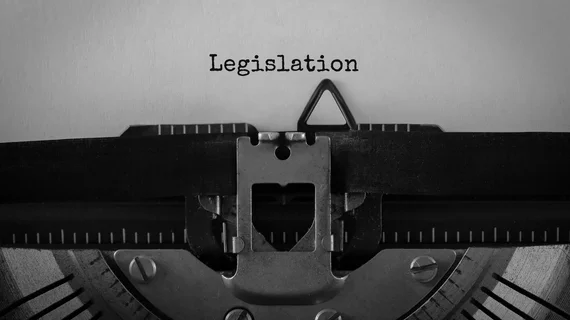American College of Radiology celebrates defeat of ‘harmful’ legislation in 2 states
The American College of Radiology on Thursday touted the defeat of “harmful” bills in two states, which would have granted more authority to nonphysician providers.
Both measures made it as far as reaching passage by lawmakers in Oklahoma and Wisconsin. However, governors in both states vetoed the bills, drawing praise from ACR and local radiologists.
“The American College of Radiology recognizes the hard work and accomplishments of its members and the physician community in these states, with special recognition of the Oklahoma State Radiological Society and the Wisconsin Radiological Society for their advocacy efforts,” ACR said in a April 11 news update.
Wisconsin’s Senate Bill 145 would have granted advanced-practice registered nurses full authority to handle varying duties. But for the second time in two legislative sessions, Democratic Gov. Tony Evers vetoed the measure. Wisconsin radiologists “advocated strongly” against the bill, ACR noted, alongside other physician groups such as the Wisconsin Medical Society.
“We agree with Gov. Tony Evers’ decision to veto this APRN legislation. The bill the legislature passed lacked the minimum levels of patient protections we believe are needed for a state to move toward allowing independent nursing healthcare practice,” WMS President Don Lee, MD, said April 4.
Meanwhile, Senate Bill 458 would have allowed such nurses to practice without doc supervision and prescribe certain medications in Oklahoma. Similarly, the Oklahoma State Radiological Society and other physician specialists staunchly opposed the measure, leading up to Republican Gov. Kevin Stitt rejecting it.
“As physicians, we are glad that the governor prioritized the healthcare of the citizens of Oklahoma by vetoing a harmful piece of [scope of practice] legislation,” Sharon D’Souza, MD, OSRS president, said in the ACR news update.
Both state societies secured scope-of-practice grants from the college to aid in their advocacy push. ACR announced the Oklahoma radiology group’s award a year ago, with the society securing a $20,000 grant. The college urged others to inquire if they are facing similar challenges.
“As we’ve seen in other states, expanding APRN scope does not increase the number of providers, but will instead decrease the team-based approach to medicine and replace physicians with providers who have approximately one-20th of the training,” Oklahoma State Medical Association President Diane Heaton, MD, said in a separate statement issued March 29. “Oklahoma desperately needs more healthcare providers, including physicians. The most effective way to grow these numbers is through increased funding for education, residency and training programs, as well as incentives for those who choose to practice in high-need areas.”

